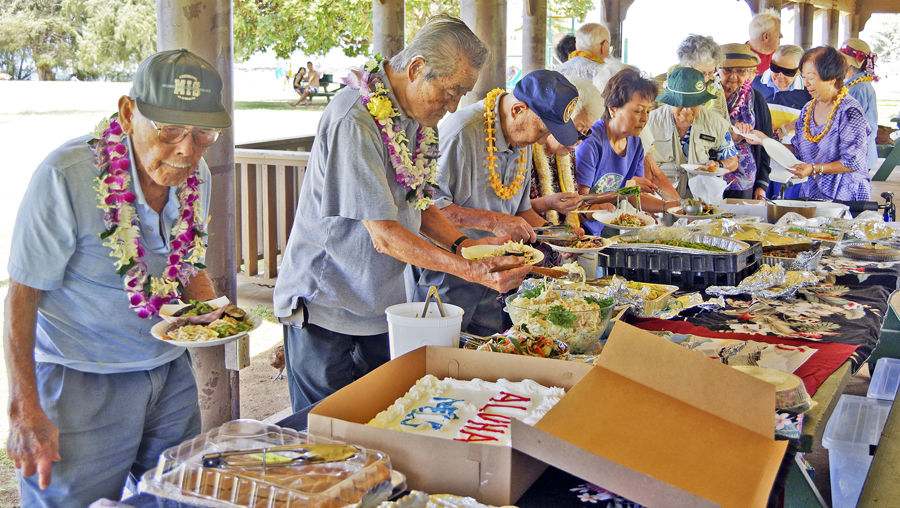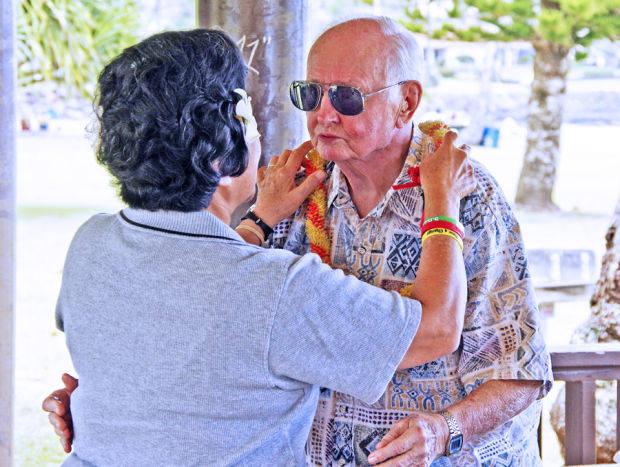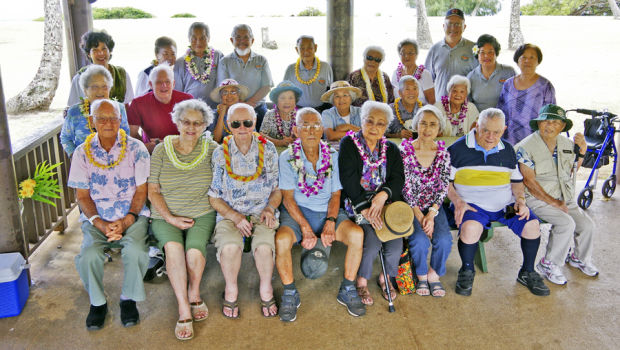POIPU — The special cake donated by the daughter of Mabel and Norman Hashisaka on Thursday said it all — “Aloha MIS!” Kauai members of the Military Intelligence Service unit who served in World War II enjoyed their final get-together
POIPU — The special cake donated by the daughter of Mabel and Norman Hashisaka on Thursday said it all — “Aloha MIS!”
Kauai members of the Military Intelligence Service unit who served in World War II enjoyed their final get-together at Poipu Beach Park.
“People feel that because of the technology, the stories have been published and told. It’s finally on paper,” said Brigadier General (ret.) Myron Dobashi whose father, Yeso Dobashi, was a member of the MIS. “But it’s not because many of the veterans don’t talk about what they went through, feeling they are not worthy to speak of the events.”
Dobashi said his dad, nicknamed “Angel,” was in one of the last groups to be drafted and never made it to the front lines.
“He was one of the older guys in his group,” Dobashi said.
Reggie Gage said he was a member of the MIS at Pearl Harbor.
“I’m the only one here who was with the U.S. Navy,” said Gage, who worked with Naval Intelligence at Pearl Harbor Command Center. “The only other difference is I’m the gaijin, a Japanese word for foreigner, non-Japanese, or outsider.”
Gage said there are two types of intelligence — offensive and defensive.
“A lot of people were involved in defensive intelligence,” Gage said. “But Arthur Komori from Kapaa was involved in offensive intelligence, being sent to Tokyo to infiltrate the Japanese army.”
According to the 100th Infantry Battalion Veterans Education Center, a handful of Japanese American GIs who were early graduates of the MIS Language School in San Francisco became the first nissei, or second generation Japanese Americans, to see combat in World War II on Guadalcanal where they demonstrated the value of battlefield linguists, translating enemy communications and interrogating enemy prisoners of war on the spot.
Stanley Segawa, one of five surviving MIS members who attended the Poipu outing, was sent to serve as an interpreter at an Okinawa hospital where he met his wife Judy.
“Not too many guys can talk Japanese,” Segawa said, proudly showing off his MIS cap. “Civilians died, too. It was really sad. The Japanese army was at the hospital, but the American army had a lot of power. They were too strong for the Japanese.”
Norman Hashisaka was also sent to Japan, his wife Mabel said.
“He was in Yokohama as a court interpreter for the war crimes,” Mabel said. “Jiro Yukimura was also an interpreter and was aboard the U.S.S. Missouri when Japan signed the surrender papers ending World War II. My brother Norito was also an MIS, serving in Australia, and Keiji, another brother, was with Cannon Co. in the 442nd Regimental Combat Team. That left Toru, who had to stay home because everyone else was serving on different fronts.”
Ed Yamada of Lawai said his father served as a Japanese language instructor in Boulder, Colo.
“My dad was born in Hilo, his parents coming over to Hawaii to work as contract laborers for the Hamakua Sugar Co.,” Yamada said. “Following their contract, some of the family returned to Japan, but some of the family moved to the Mainland where, following the bombing of Pearl Harbor, they were interned in Amache, Colo.”
Yamada said it was a good thing his dad was a veteran of World War I because when the war broke out, he was involved in importing and exporting with Japan.
“That made him a prime candidate for interning,” Yamada said. “But he was a veteran and they had him teaching Japanese at the university. It was so unfair because his family was interned and he was teaching Japanese. This is a long story.”
Gage said former Kauai judge Ben Tashiro could be considered the father of the Kauai MIS, which met at least once a year at his home.
“When the judge passed, Quentin Belles took over as president and we used to meet at his house every year,” Gage said.




